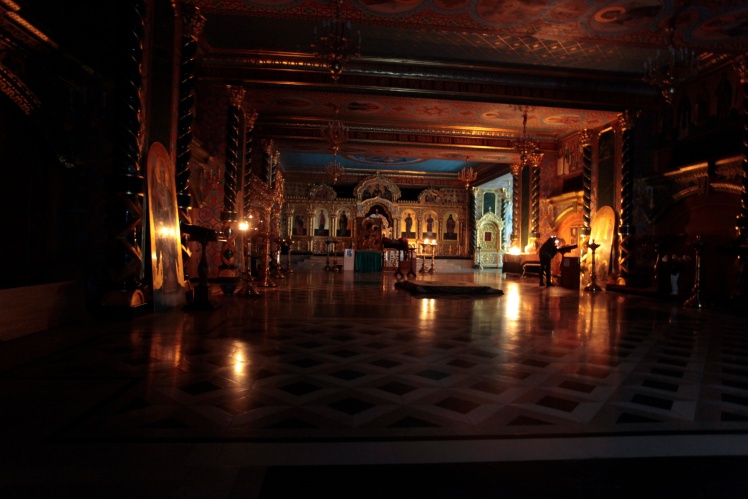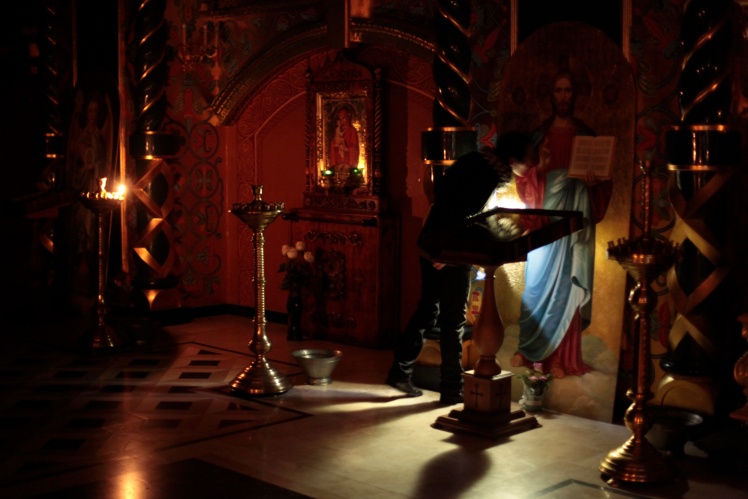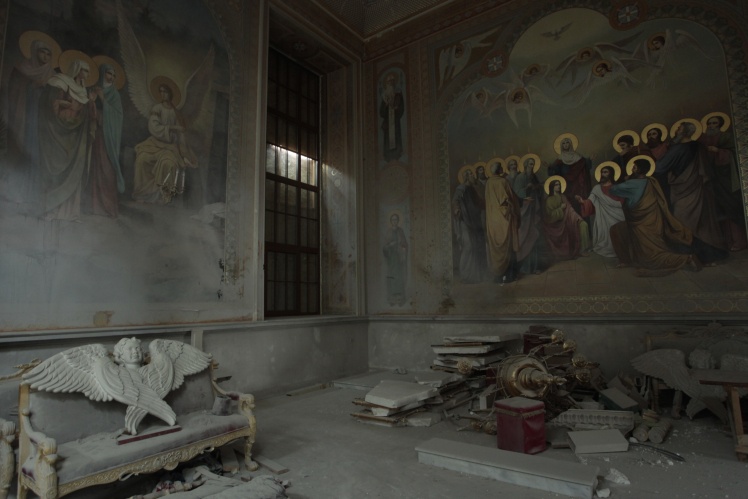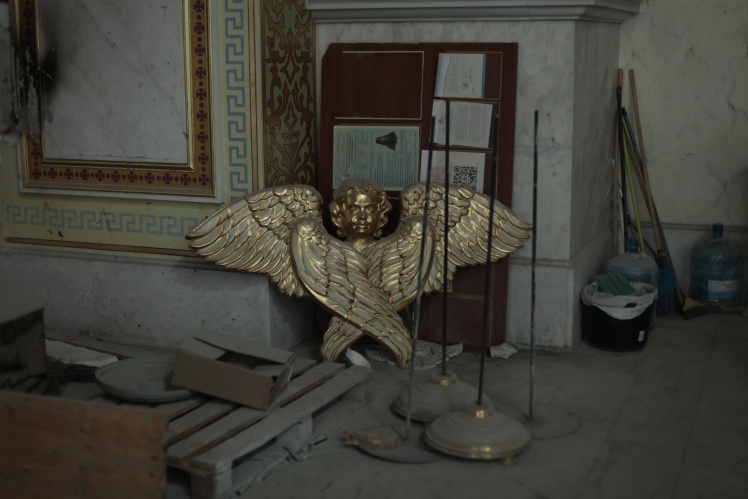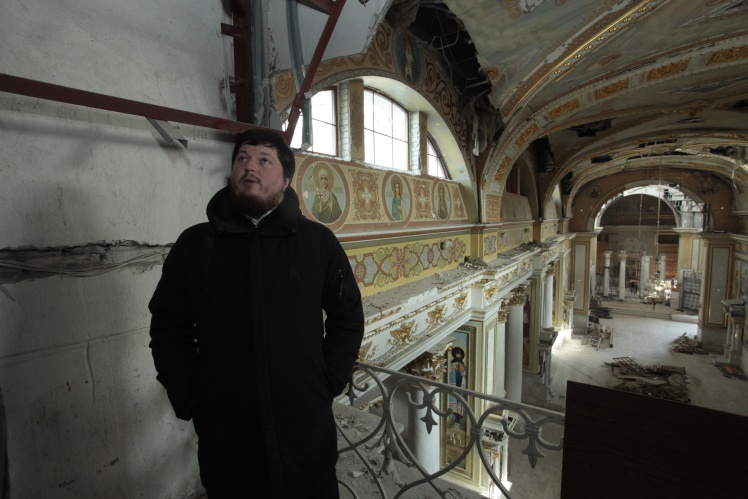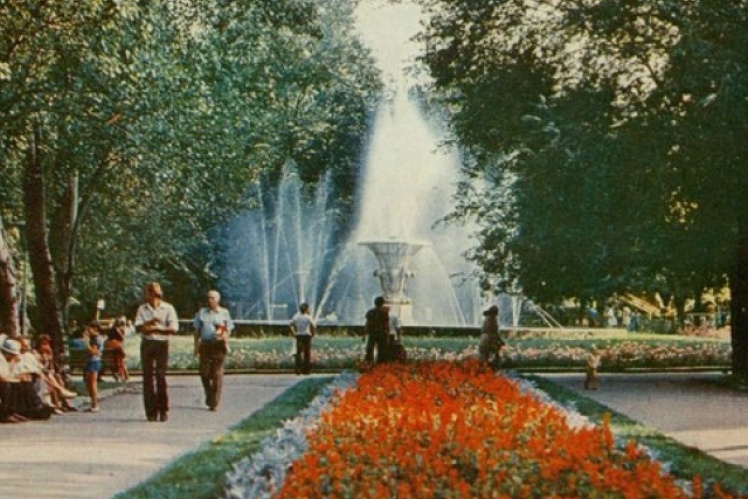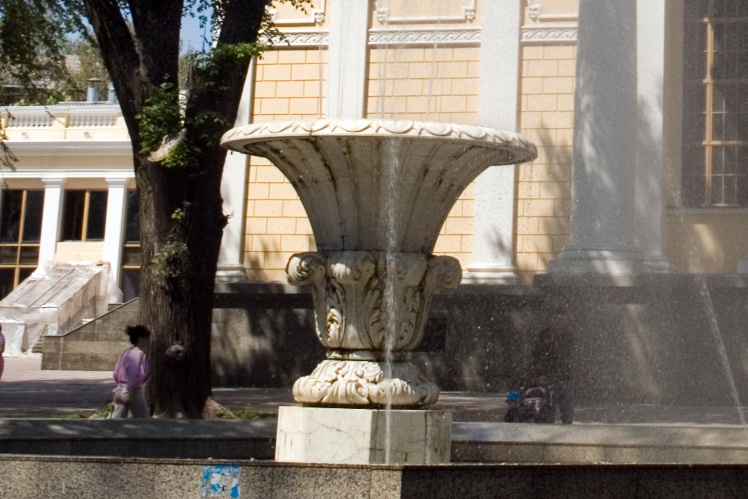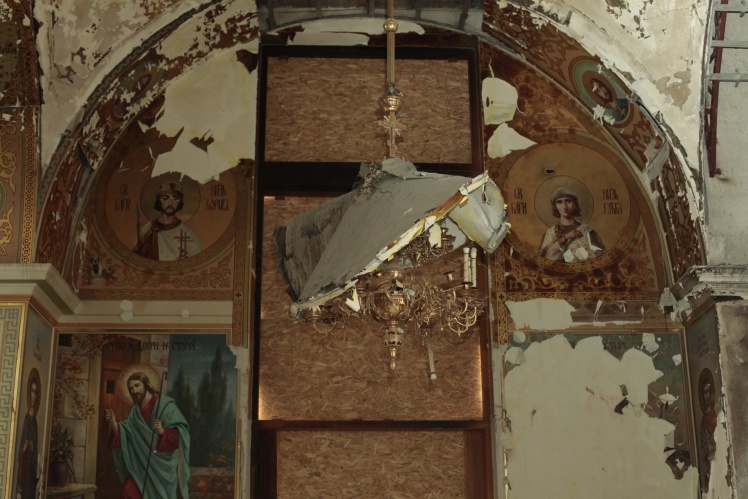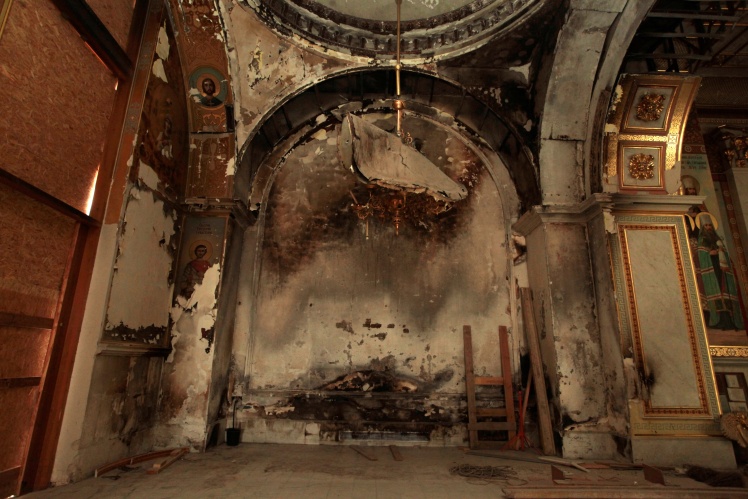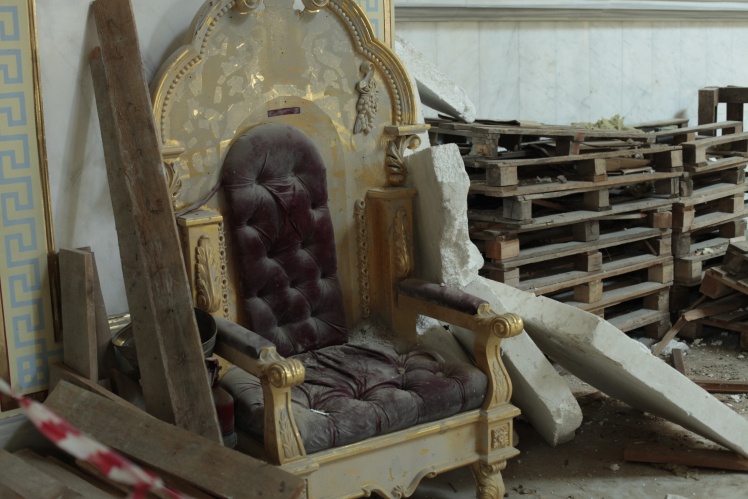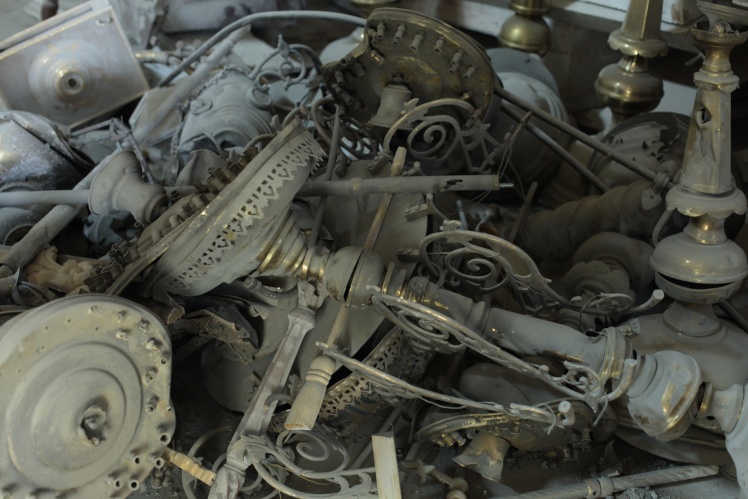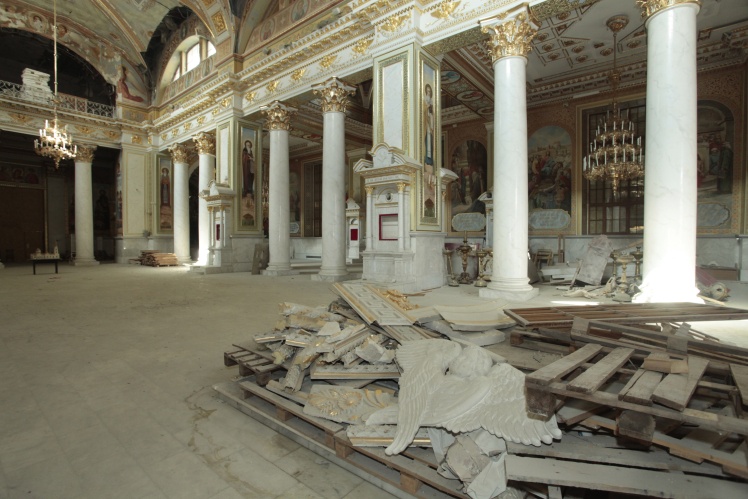On March 22, 2024, it is warm and sunny in Odesa, but some of the townspeople are without electricity. Since the second half of February, Russia has been constantly shelling Odesa with missiles and drones. Another attack the day before was on the energy infrastructure. There is no electricity in the Transfiguration Cathedral. It is dark in the lower temple, which was almost undamaged by the hit, as there are no windows. In the dim light of the candles, one can see how people carefully walk around the church and get baptized.
The lower church of the cathedral. There is no electricity in it due to the Russian attack on the eve of the report.
Сергій Поляков / «Бабель»
Archpriest Stepan says that after the missile strike, services are held only here. And in the first days of the full-scale war, the lower temple was a shelter for hundreds of Odesans. Now people do not come to hide in the temple, although shelling almost doesnʼt stop. And itʼs not just that in two years, people got used to air raid alarms and often ignore them. The number of parishioners has decreased significantly — they left Odesa. And even after the attack, the priest adds, people are simply afraid to come to the cathedral, although it is quite safe in the lower temple.
Ruined parts of the decoration of the cathedral.
Сергій Поляков / «Бабель»
The main shrine of the lower temple is the relics of Archbishop Innokenty, who is considered the patron saint of Odesa. In 1997, the church added him to the host of saints. Another attraction of the cathedral is the niches with the ashes of Mikhail and Ekaterina Vorontsovs. Two plates with an inscription in Russian. When asked whether the church has any problems with the fact that the remains of Russian figures are kept in the Ukrainian church, the priest modestly answers: "No." Moreover, he adds, they appeared here back in 2005, when the cathedral was rebuilt.
Archpriest Stepan on the upper floor of the cathedral, from which all the destruction is clearly visible.
Сергій Поляков / «Бабель»
We climb to the so-called upper temple, on which the blow came. New windows and doors were installed here in eight months. Two UNESCO employees are walking around the temple with us. They are still assessing the damage from the Russian strike. Construction workers are also working every day, but today, because there is no electricity, the cathedral is quiet and almost empty.
The history of the temple begins in 1795, when the first stone was laid at the construction site. In 1808, the temple was solemnly consecrated. Later, it became the center of the Kherson-Tavria Diocese, Father Stepan says, a cathedral — which means that a bishop served there. At the beginning of the 20th century, the cathedral was one of the largest churches of the then Russian Empire.
In 1932, the Soviet authorities decided to close the cathedral, and four years later it was blown up. The remains were looted — the gold and icons were taken away.
"When the cathedral was about to be blown up, the Odesans stood around it," Father Stepan says. “They were not allowed inside, and they could not do anything. They just stood and watched what would happen.
Transfiguration Cathedral at the beginning of the 20th century.
Wikimedia / «Бабель»
A school was built near the temple from the bricks that remained after the explosion. A fountain appeared in its place. The priest says: first, instead of the cathedral, the Communists planned to build a public toilet. But academician Volodymyr Filatov, who was in love with Odessa and was a very religious person, insisted that it be a fountain, not a toilet.
The Filatov Vase fountain on the site of the cathedral in Soviet times. After the restoration of the cathedral, the fountain was moved, now it is opposite the church.
Wikimedia / «Бабель»
There was talk of restoration of the cathedral immediately after the collapse of the Soviet Union. But the building started in 1999. The initiators of the building tried to make the cathedral as similar to the original as possible, but it was not feasible to repeat everything — too few photographs of that period remained. However, the work was grandiose, Father Stepan says. The icon painters of the Holy Dormition Pochaiv Lavra came to paint the church. In 2005, the cathedral was consecrated.
The roof of the cathedral before and after the Russian attack.
Getty Images / «Babel'»; Сергій Поляков / «Бабель»
Before the Russian attack on the cathedral, Metropolitan Agafangel of Odesa and Izmail was often called a separatist. In the past, he was a deputy of the Odesa City Council from the pro-Russian Party of Regions, spoke against the autocephaly of the Ukrainian Orthodox Church, against Ukraineʼs integration into NATO and the EU. In 2022, Agafangel condemned Russia, and called the attack on the cathedral a "genocide of the Ukrainian people." Archpriest Stepan says that in fact the metropolitan has always been consistent.
"The position of the Ukrainian Orthodox Church [of Moscow Patriarchy] was unchanged even before the attack," he believes. “[The head of the church] metropolitan Onufriy in the first days condemned the war and said that there is no excuse for those who start it. Everything was clear to me, too, from the first days. I didnʼt go anywhere, I stayed here. I mourned the people who died [from rocket attacks], the children. The Church constantly helps the [Ukrainian] military.”
The wall of the cathedral destroyed by a rocket attack.
Сергій Поляков / «Бабель»
There is a destroyed wall where the chapel of St. Peter used to be, and the Cathedral Square can be seen through the opening. The rocket destroyed most of the kiots and sacristies. A broken chandelier hangs from the ceiling. Due to the fire that broke out immediately after the impact, even some walls were burnt.
Icons and a chandelier damaged by debris. A wall that burned out during a fire. There was a church shop here.
Сергій Поляков / «Бабель»
Some shrines were never found after the attack. Father Stepan does not rule out that they were stolen in the chaos of the first days. Many Odesans came to help clear the rubble, and not all of them, the priest says, had good intentions.
Сергій Поляков / «Бабель»
The UOC MP church has not yet received money for the restoration of the cathedral, the archpriest claims. Including €500,000 that Italy had to hand over. What has been restored now was done exclusively with the money of the diocese and parishionersʼ donations.
Сергій Поляков / «Бабель»
Finally, I ask Father Stepan if the parishioners and he himself have changed after the attack.
“Adversity unites people. People come just to light a candle, they often ask: "Father, when will it all end?", the priest answers and for the first time during the conversation he himself touches on an unpleasant topic — criticism of the UOC MP for its ties with Russia. “I hope people will become kinder to each other. They shouted at us that we are a Russian church. But if they want to criticize, let them. The Lord sees everything.”
Сергій Поляков / «Бабель»
Translated from Ukrainian by Anton Semyzhenko,
So that Babel can continue to tell important stories, support us: 🔸 in hryvnia, 🔸 Buy Me a Coffee, 🔸 Patreon, 🔸 PayPal: [email protected].

